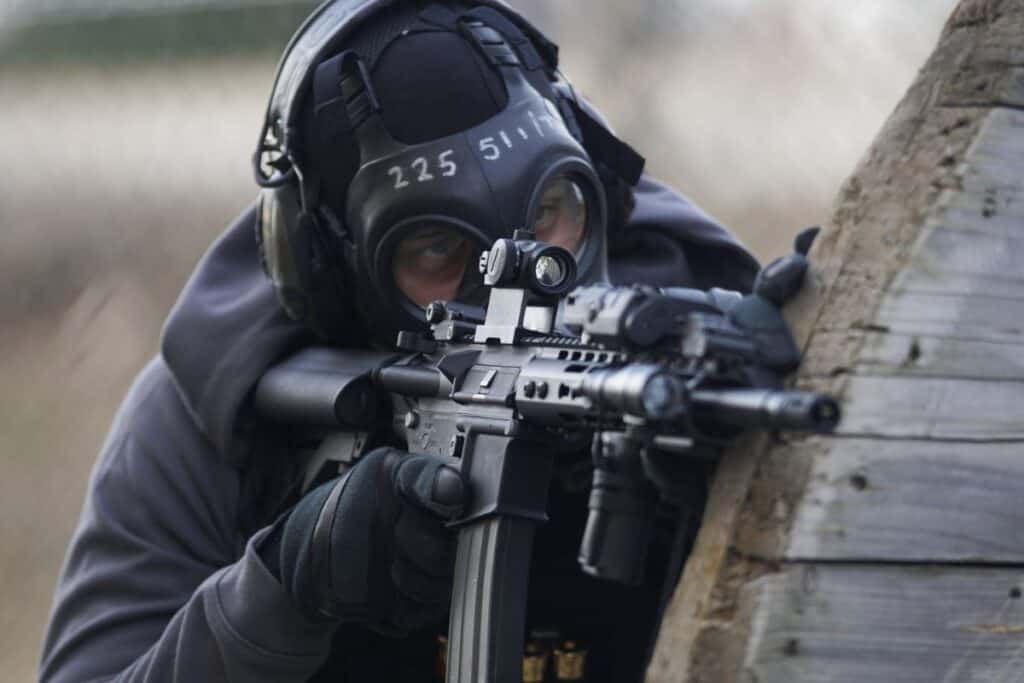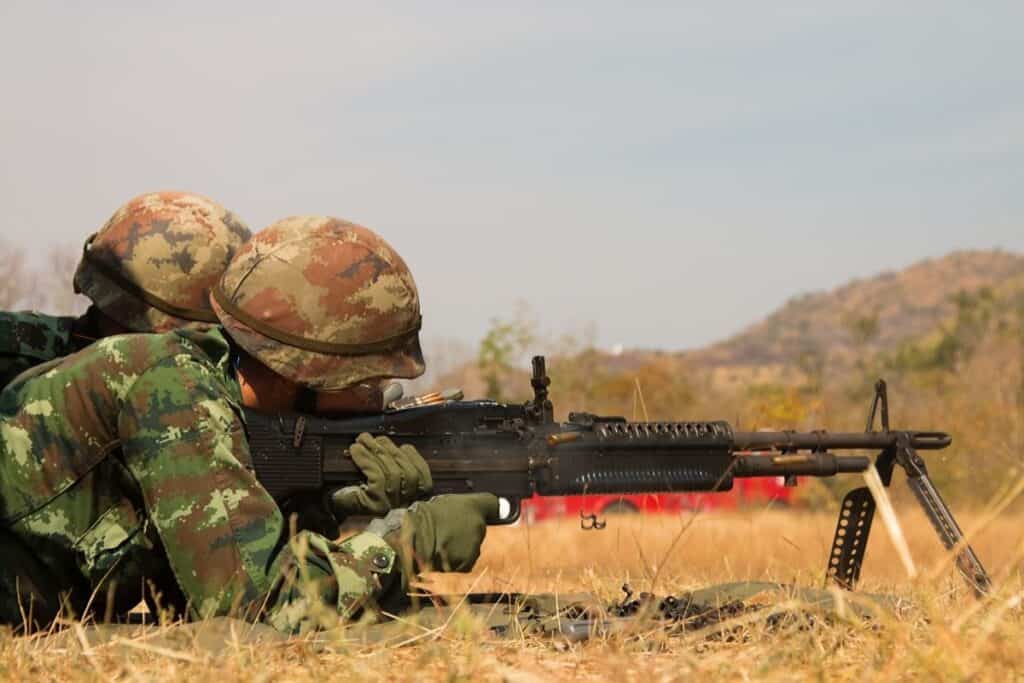If you have recently started using a rifle and want to improve your shot accuracy, you will need to learn how to sight it properly. Mastering this will help you conquer the rifle game and hit your targets more often than not.
Learning how to sight your rifle takes a little practice. Not only do you have to learn the sighting technique, but also how to install the rifle scope properly.

Your rifle needs to be “sighted-in” every time it is used. This is because it can easily be moved out of alignment through unexpected jolts and movements.
More importantly, if the rifle is not sighted correctly, it could become dangerous to those around. The aim could be off, and the bullet could go astray.
To help you understand what sighting is and how to master it safely, we have completed this in-depth guide. So, next time you head out shooting, you stand a better chance of enjoying a successful day out with your rifle.
What Is A Rifle Scope, And Why Does It Need To Be Sighted?
The rifle scope is one of the most essential components of a rifle. It is in place to help shooters hit targets with better accuracy, whether that is short or long-range.
A number of magnification lenses are used to construct a scope alongside a reticle (a series of lines in the eyepiece). This reticle helps shooters find out how and where their rifle’s ammunition will impact the intended target.
When combined, the magnification lenses and reticle help regular shooters become sharp shooters with improved accuracy from further distances.
So, why does the scope need to be sighted? As we stated, sighting your rifle’s scope will help you achieve the best possible shot. It is crucial that every rifle owner learns how to scope their firearm. Here is why:
Improved And Increased Accuracy
Without a scope, your shot accuracy is impeded greatly by distance. By sighting the scope properly, you can achieve more accurate shots from greater distances.
Increased Range Shots
Linked to our last point, sighting the scope simply allows shooters to shoot at targets that are much further away. So, if you’re hunting, this can be very useful.
Enhances Safety
Sighting a rifle means that you are less likely to miss a target and see your shot go astray. Therefore, those around you are safer.
Also, for nighttime shooting, sighting your scope can help you get the target in site with better accuracy. Some scopes even come equipped with night vision to make it even safer.
Helps You Become A Better And More Confident Shooter
Knowing that you can hit a target with more consistency and accuracy will help you become a more confident shooter and, therefore, be willing to take on more challenges if required. Maybe you could start entering shooting competitions!
How To Sight A Rifle: Steps

Let’s get down to business. Here’s how to successful scope your rifle for improved accuracy:
- Install your rifle scope correctly – The majority of rifles these days come with a mounting system built-in for your scope to attach to. Some have tapped or pre-drilled holes, while others may have a rail system grooved into the rifle. Before you start the sighting process, ensure that your scope mount and rings are compatible with your rifle.
- Adjust your eyepiece – You must adjust your rifle’s eye distance to achieve clear vision ahead. This can be a little time-consuming and frustrating, as you will need to gently tune your scope to achieve your ideal level of eye relief. This is the distance between your eye and the scope’s end. The distance should be enough, so the recoil doesn’t come into contact with your eye as you shoot. Of course, the type of gun determines how much recoil there is, but some are more prone to “shooting” back and “scoping you.”
- Find a stable shooting position – Now, you need to get level. You can position the rifle using a bipod or a mount when placing it on a shooting bench. Just bear in mind that, if your gun is prone to a big recoil, a rifle mount can reduce this by nearly 100%. The result? Being able to hold on to your rifle with more stability and hitting your target more easily.
- Align the reticle – Aligning your rifle’s reticle is essential when preparing to shoot. A ‘canted’ reticle (when the crosshairs of the scope are not aligned to wind adjustments and elevation coordinates) can result in shots misfiring towards the left or right of your intended target. The further away you are, the more likely this is going to result in missed targets.
- Set your Minute of Angle (MOA) – The MOA is linked to the minute hand of a clock. Every minute relates to 1/60 of a degree, therefore, allowing more accurate shooting angles. This step requires a mount to help your rifle remain stable. To achieve a one-inch ammunition impact move (one MOA at a distance of 100 yards), you need to rotate the windage control four clicks. Every click moves up a ¼ of an inch for every 100-yards. Examples of movements per click of elevation on your scope are as follows: 200 yards – ½-inch, 300 yards – ¾-inch, 400 yards – 1 inch, 500 yards – 1 ¼-inch, 600 yards – 1 ½ inches, 700 yards – 1, ¾ inches, 800 yards – 2 inches.
- Take three shots – Inspect the point of impact on your target after your shots. Understanding and knowing your MOA will help you adjust to your targets at variable distances.
Carry on adjusting, even after these steps. Try out various targets and repeat this until you get close to bullseye with your group shots consistently.
Then, practice on hitting targets that are further away while taking the environment and its variables into consideration, such as wind.
In Summary
There we are – that’s how you scope your rifle. We hope this has helped you, so you can go on and become the sharpest of shooters.
Thanks for reading.

